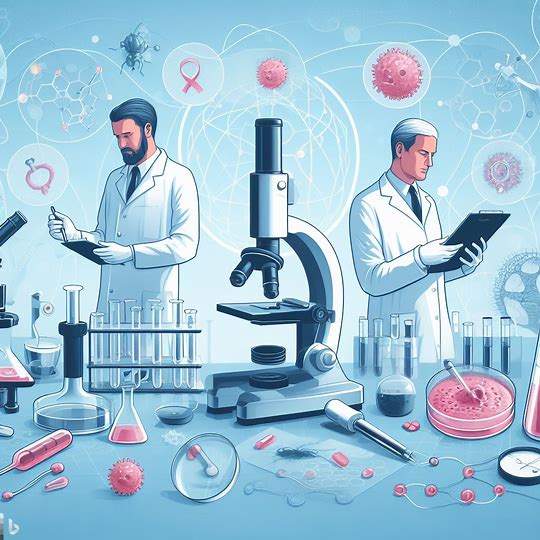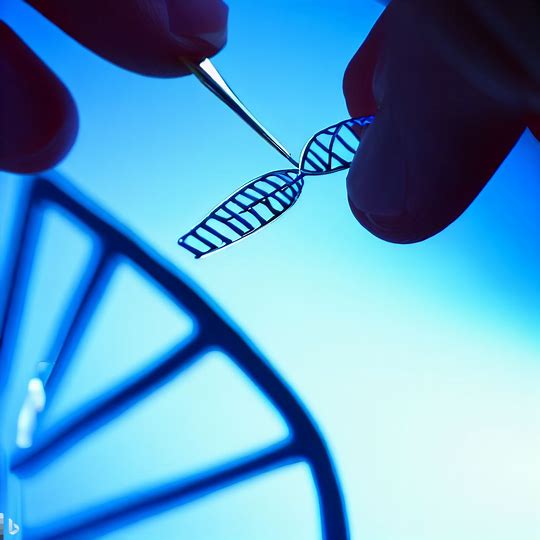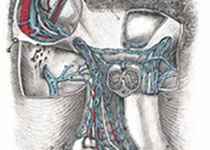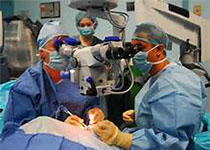【综述】| 去势抵抗性前列腺癌免疫微环境的研究现状与治疗方向
2023-12-14 中国癌症杂志 中国癌症杂志 发表于上海
CRPC的TIME非常复杂,免疫治疗仍然面临着许多挑战。但随着技术和研究的进步,一些新的免疫治疗方案正在研究中,相信未来肿瘤免疫治疗会给CRPC患者带来更佳的治疗效果。
[摘要] 随着肿瘤免疫学的快速发展,越来越多的研究关注肿瘤微环境中的免疫细胞和信号分子的作用。前列腺癌是全球男性发病率第二的恶性肿瘤。随着我国人口老龄化和筛查率的提高,前列腺癌发病率不断上升。雄激素剥夺治疗(androgen deprivation therapy,ADT)是晚期前列腺癌的主要治疗手段。然而,大多数患者在接受ADT治疗后最终都会进展为去势抵抗性前列腺癌(castration-resistant prostate cancer,CRPC)。CRPC患者的中位生存期一直低于2年,近年来出现了一些新的治疗方法,患者生存率有所提高,但总体预后仍然较差。肿瘤免疫治疗通过激发或重建机体的免疫系统,从而控制和杀伤肿瘤细胞。近年来,免疫治疗进入临床研究并快速发展,展现出强大的治疗潜力,成为继手术、放疗、化疗、靶向治疗后的另一种有效的肿瘤治疗手段。然而,免疫治疗对CRPC患者收效甚微。因此,CRPC的肿瘤免疫微环境(tumor immune microenvironment,TIME)备受众多学者的关注。既往的研究认为,CRPC的免疫浸润一般较少,拥有相对较高的免疫抑制性肿瘤微环境,如T淋巴细胞浸润和活性都比较低,且高表达各种免疫抑制因子,如细胞毒性T淋巴细胞相关抗原4(cytotoxic T lymphocyte-associated antigen-4,CTLA-4)、程序性死亡[蛋白]-1(programmed death-1, PD-1)/程序性死亡[蛋白]配体-1(programmed death ligand-1,PD-L1)等,被认为是免疫学上的“冷”肿瘤。除了自身的免疫抑制机制,CRPC还有着复杂的免疫逃逸机制,如抑制免疫细胞活性,或选择性地表达低免疫原性抗原,从而躲避免疫系统识别。由于CRPC特殊的免疫抑制性肿瘤微环境,单独采取免疫治疗的效果往往不理想,筛选适合的免疫治疗方案成为了提高CRPC患者治疗效果的关键。本文总结了CRPC患者TIME中免疫细胞的作用机制,以及免疫检查点抑制剂联合ADT治疗、化疗、Sipuleucel-T肿瘤疫苗、嵌合抗原受体-T(chimeric antigen receptor-T,CAR-T)细胞治疗、溶瘤病毒治疗,或者免疫检查点抑制剂联合趋化因子受体拮抗剂、酪氨酸激酶抑制剂、多腺苷二磷酸核糖聚合酶[poly(ADP-ribose) polymerase,PARP]抑制剂等治疗方法中免疫细胞及各种细胞因子的相互作用关系。总之,CRPC的TIME非常复杂,免疫治疗仍然面临着许多挑战。但随着技术和研究的进步,一些新的免疫治疗方案正在研究中,相信未来肿瘤免疫治疗会给CRPC患者带来更佳的治疗效果。
[关键词] 去势抵抗性;前列腺癌;肿瘤免疫微环境
[Abstract] With the rapid development of cancer immunology, more and more research focuses on the role of immune cells and signaling molecules in the tumor microenvironment. Prostate cancer is the second most common malignant tumor in men globally. With the increase in our population ages and screening rates, the incidence of prostate cancer in China is increasing. Androgen deprivation therapy (ADT) is a primary treatment for late-stage prostate cancer. However, most patients eventually progress to castration-resistant prostate cancer (CRPC) after ADT treatment. The median survival of CRPC patients has been less than two years. Although new treatment methods have emerged in recent years, and patient survival has improved, however, the overall prognosis still remains poor. Tumor immunotherapy works by stimulating or rebuilding the body's immune system to control and kill tumor cells. In recent years, immunotherapy has entered clinical research and rapidly developed into an effective tumor-treatment approach following surgery, radiotherapy, chemotherapy and targeted therapy. However, the effect of immunotherapy on CRPC patients is usually very poor. Therefore, the tumor microenvironment of CRPC has attracted many scholars' attention. Previous studies have suggested that CRPC generally has less immune infiltration, a relatively high immunosuppressive tumor microenvironment, such as low infiltration and activity of T cells, and high expressions of various immunosuppressive factors, such as cytotoxic T lymphocyte- associated antigen-4 (CTLA-4), programmed death-1 (PD-1)/programmed death ligand-1 (PD-L1), etc., which is considered as an immune "cold" tumor. In addition to its own immune-inhibitory mechanisms, CRPC has complex immune evasion mechanisms that suppress immune cell activity or selectively express low immunogenic antigen to evade immune system recognition. Due to the particular immunosuppressive tumor microenvironment of CRPC, the effect of immunotherapy alone is often unsatisfactory. Therefore, the selection of appropriate immunotherapy strategies has become the key to improving the treatment effect of CRPC patients. This review summarized the mechanisms underlying immune cells in the immune microenvironment of CRPC tumors and their interactions with various cytokines in the context of immune checkpoint inhibitor therapy combined with ADT, chemotherapy, Sipuleucel-T tumor vaccines, chimeric antigen receptor-T (CAR-T) cell therapy, oncolytic virus therapy, or in combination with chemokine receptor antagonists, tyrosine kinase inhibitors, poly (ADP-ribose) polymerase (PARP) inhibitors and other treatments. In conclusion, the tumor immune microenvironment of CRPC is highly complex, and immunotherapy still faces many challenges. However, with the progress of technological advancements and research, some new immunotherapy options are being studied, and it is believed that tumor immunotherapy will bring better therapeutic effects to patients with CRPC in the future.
[Key words] Castration-resistant; Prostate cancer; Tumor immune microenvironment
根据国际癌症研究机构(International Agency for Research on Cancer,IARC)统计, 2020年全球前列腺癌新发病例约为141.4万例,发病率居全球男性恶性肿瘤第2位;死亡病例约37.5万例,位列男性癌症死因第5位[1]。近年来,随着我国前列腺癌筛查率的提高,发病率呈现不断上升的趋势。2020年中国男性癌症新发病例中,前列腺癌居第6位,位列泌尿生殖系统恶性肿瘤第1位。雄激素剥夺治疗(androgen deprivation therapy,ADT)是晚期前列腺癌的主要治疗手段,然而10%~20%的晚期前列腺癌患者仍会在5年内进展为去势抵抗性前列腺癌(castration-resistant prostate cancer,CRPC),其中至少84%的男性在CRPC确诊时存在转移。转移性CRPC接受一线治疗,如新型内分泌治疗药物阿比特龙和恩杂鲁胺以及接受多西他赛化疗后,患者的中位总生存期(overall survival,OS)约为3年;真实世界中,仅半数患者能接受疗效较好的一线治疗,中位OS不到2年[2]。免疫治疗(如免疫检查点抑制剂)在CRPC患者收效甚微[3],这可能与其形成的免疫抑制性肿瘤微环境有关。
1 肿瘤免疫微环境(tumor immune microenvironment,TIME)
TIME即肿瘤细胞自身所处的内环境,由一系列不同类型的细胞及其驱动分子构成,包括免疫细胞,如T淋巴细胞、B淋巴细胞、肿瘤相关巨噬细胞(tumor-associated macrophage,TAM)、自然杀伤(natural killer,NK)细胞、树突状细胞(dendritic cell,DC)、肿瘤相关中性粒细胞(tumor-associated neutrophil,TAN)、髓源性抑制细胞(myeloid-derived suppressor cell,MDSC)等,以及间质细胞、内皮细胞、脂肪细胞、细胞外基质和调节各种细胞内信号转导通路的细胞因子、趋化因子等,这些不同因素之间的相互作用影响肿瘤的生存、发展以及免疫逃逸。
2 TIME在CRPC发生、发展中的作用
CRPC具有复杂的TIME,多种免疫抑制分子和机制共存并相互作用,促进肿瘤细胞免疫逃逸导致前列腺癌向CRPC进展。免疫逃逸机制可能有:肿瘤浸润性T淋巴细胞的抑制或耗竭,NK细胞的抑制和免疫抑制性细胞的增加,如调节性T细胞(regulatory T cell,Treg)、M2-TAM、MDSC、DC、间质细胞和脂肪细胞等。通过活化T细胞和增加细胞毒性T淋巴细胞杀伤性来提高免疫细胞的抗肿瘤活性,这是未来治疗CRPC的研究方向。
2.1 TAM
最新证据表明,TAM在肿瘤发展、免疫逃逸和浸润过程中发挥关键作用。TAM能够刺激血管生成,还可以分泌多种细胞因子或趋化因子,如CXC族趋化因子配体(CXC chemokine ligand,CXCL)2、白细胞介素(interleukin,IL)-6、转化生长因子-β(transforming growth factor-beta,TGF-β)、IL-8(CXCL8)、CXCL12、补体5a(complement component 5a,C5a)等,这些因子可促进肿瘤生长、浸润和骨转移的发生,且浸润程度与预后不良有关[4-5]。TAM可以分化为促进细胞死亡的M1型和促进肿瘤生长的M2型。CRPC中存在的TAM大多数是M2型,且从正常前列腺组织、前列腺癌到CRPC中,TAM的数量进行性增加,且M1/M2比值越小,患者预后越差[6]。Guan等[7]研究发现:TAM通过激活CXCL12/CXC族趋化因子受体4(CXC chemokine receptor 4,CXCR4)生物学轴,导致CRPC对多西他赛耐药。因此,靶向趋化因子或者阻断CXCL12/CXCR4生物学轴,可能是CRPC治疗的新思路。
2.2 肿瘤相关成纤维细胞(cancer-associated fibroblast,CAF)
CAF不仅可促进肿瘤发展、侵袭、转移;还具有抑制药物与免疫细胞向肿瘤组织深层浸润,从而降低肿瘤治疗效果的作用。研究[8]发现,CRPC-CAF具有很强的侵袭性,CXCL12在CAF中强烈表达,可以诱导上皮-间质转化,促进前列腺癌向CRPC转化。CRPC-CAF还具有明显的异质性,其表型转换依赖于TGF-β/Smad信号转导通路。有研究[9]证实,分泌型磷蛋白1 (secreted phosphoprotein 1,SPP1)在CRPC中高表达,SPP1通过激活SPP1-ERK旁分泌信号转导通路导致去势抵抗,TGF-β失活可以降低CAF丰度和细胞外信号调节激酶(extracellular signal-regulated kinase,ERK)强度,恢复CRPC对ADT的敏感性。同样,ERK抑制剂可以防止肿瘤复发[9]。雄激素受体(androgen receptor,AR)、基质金属蛋白酶11(matrix metalloproteinase 11,MMP-11)、70 kDa热激蛋白1A(heatshock-70 kDa-protein-1A,HSPA1A)在CRPC-CAF中表达增高,促进前列腺癌的去势抵抗[10]。CAF分泌神经调节蛋白1(neuregulin 1,NRG1)激活HER3信号也可以促进前列腺癌的去势抵抗[11]。因此,通过抑制CAF表型转化、阻断CAF旁分泌通路或者靶向NRG1等调节因子并联合现有的ADT治疗可能会改善晚期CRPC患者的治疗结局。
2.3 MDSC
MDSC的主要特点是具有较强的免疫抑制活性,与肿瘤进展有关。既往研究[12]表明, CRPC患者TIME中MDSC水平显著升高,可以抑制NK细胞和诱导Treg激活。MDSC还可以分泌IL-23,可以激活AR信号转导通路[13],从而造成前列腺癌去势抵抗。干扰素-α(interferon-α,IFN-α)可以减少MDSC的数量和抑制功能,恢复T细胞活性[14]。因此,阻断IL-23或者用IFN-α治疗CRPC是一种很有前途的策略。
2.4 Treg
Treg是一类免疫抑制性T细胞,是肿瘤免疫耐受和逃逸的关键成分之一。既往研究[15]发现,在肿瘤免疫逃逸过程中,CRPC患者循环中的T细胞减少,但Treg是增加的,Treg高表达的前列腺癌患者更容易进展为CRPC,且浸润程度与患者预后呈正相关。Treg还通过分泌TGF-β、IL-10和IL-35,抑制DC抗原呈递和CD4+辅助T细胞(helper T cell,Th)的功能,通过对IL-33/ST2、PI3K、Hippo与Wnt/β-catenin信号转导通路的调节,最终导致前列腺癌去势抵抗、侵袭和转移。因此,抑制或耗尽Treg可能会改善CRPC的预后。
2.5 NK细胞
NK细胞置身于人体抗肿瘤的第一道防线。NK细胞的功能与信号转导及转录激活子(signal transducer and activator of transcription,STAT)家族有密切的关系[16],STAT1促进NK细胞的细胞毒作用,STAT3可以抑制NK细胞的抗肿瘤功能。细胞因子信号传导抑制子(suppressor of cytokine signaling,SOCS)是JAK/STAT信号转导通路的负反馈因子,又被称作细胞的“分子刹车”,调控细胞增殖、分化和迁移。在正常细胞中,JAK/STAT信号转导通路被SOCS负反馈迅速抑制;而在肿瘤细胞中,JAK/STAT信号转导通路被过度激活,SOCS1/3则被沉默[17]。在IL-6或低氧微环境中JAK/STAT3-程序性死亡[蛋白]配体-1 (programmed death ligand-1,PD-L1)信号转导通路被上调,从而导致了CRPC从NK细胞中免疫逃逸;而SOCS3可延长CRPC中NK细胞的存活时间,从而增强NK细胞的抗肿瘤活性,提示JAK/STAT信号转导通路抑制剂联合PD-L1抑制剂可能增强NK细胞对缺氧诱导的CRPC细胞的毒性,这可望为CRPC的免疫治疗提供崭新的思路和治疗靶点。
3 抗肿瘤治疗对CRPC免疫微环境的改变
3.1 ADT治疗
ADT治疗是复发性、晚期前列腺癌的标准治疗方式,通过降低体内雄激素水平达到缓解症状的目的,然而ADT对于CRPC疗效有限。在ADT耐药性机制研究[18]中发现,AR是CD8+T细胞的负调控因子。ADT治疗可以改变CRPC的TIME,使CD8+T细胞数量显著增加,CD8+T细胞通过识别肿瘤细胞表面特异性抗原和Ⅰ类主要组织相容性复合物(major histocompatibility complex, MHC)来杀伤肿瘤细胞[19]。Gankyrin又称PSMD10,最早发现于肝癌组织,在许多肿瘤组织中高表达,与细胞的增殖、凋亡、侵袭及耐药有关,研究[20-21]显示其与CRPC的ADT耐药有一定的关系。Gankyrin通过上调非POU结构域的八聚体结构蛋白(NONO)导致AR表达增加,触发高迁移率族蛋白1(high mobility group box 1 protein,HMGB1)转录、表达和分泌,促进TAM募集和激活。TAM分泌IL-6,通过STAT3促进前列腺癌向CRPC转化、ADT耐药和gankyrin表达,从而形成gankyrin/NONO/AR/HMGB1/IL-6/STAT3正反馈信号转导通路。炎症因子IL-6可以通过不同的机制导致ADT耐药,但JAK-STAT3信号转导通路最为重要。阿比特龙和恩杂鲁胺耐药的CRPC患者的CD8+T细胞明显减少,M2型TAM和MDSC显著增加,PD-L1表达上调,IL-6的基线水平也明显升高[15,22]。因此,靶向或阻断gankyrin/NONO/AR/HMGB1/IL-6/STAT3信号转导通路,可以有效地抑制ADT耐药,同时IL-6也可以预测ADT治疗的敏感性。最新研究[23]发现,在免疫治疗过程中,PD-L1高表达和CD8+T细胞丰富的CRPC患者,经阿替利珠单抗(atezolizumab)联合恩杂鲁胺治疗可获得更长的PFS,这为免疫检查点抑制剂联合ADT治疗提供了依据,AR水平也可能是免疫治疗效果预测的关键。
3.2 化疗
化疗是CRPC重要的治疗方法之一, 化疗药物通过阻断细胞分裂,从而达到抑制肿瘤细胞生长的目的。多西他赛作为有症状的CRPC患者的标准一线化疗药物,在疼痛缓解、血清前列腺特异性抗原(prostate-specific antigen,PSA)水平、生活质量和总生存期(overall survival,OS)方面显示出临床获益[24]。多西他赛可以促进CRPC内T细胞浸润,增加AR上调CRPC细胞中凝集素样转录物1(lectin-like transcript 1, LLT1)的表达,促进NK细胞对CRPC细胞的杀伤作用[25];还可以上调程序性死亡[蛋白]-1 (programmed death-1,PD-1)/PD-L1的丰度,这为多西他赛联合靶向AR或免疫治疗CRPC提供了理论依据。Guan等[7]发现TAM通过激活CXCL12/CXCR4轴,导致CRPC对多西他赛耐药,敲除CXCR4可以恢复多西他赛对CRPC的敏感性。
3.3 放疗
放疗可以促进肿瘤相关抗原和压力信号的释放,并提呈给CD8+T淋巴细胞,改善局部TIME,从而触发非放疗部位肿瘤的消退。一项125I粒子植入放疗的研究[26]表明,经粒子植入后,CRPC组织中可见CD3+、CD4+、CD8+T细胞浸润,PD-L1表达强度也显著增加。体内小鼠实验证明,高剂量放疗可以通过增加肿瘤浸润性淋巴细胞数量、减弱MDSC募集来抑制CRPC的增长[27]。低剂量放疗则可增加CD4+T淋巴细胞浸润,这为联合免疫治疗提供了理论支持[28]。放疗联合免疫治疗是CRPC联合治疗的一个方向,未来还需等待更多的实验数据解读。
3.4 免疫治疗
免疫治疗是一种以细胞毒性T淋巴细胞相关抗原4(cytotoxic T lymphocyte-associated antigen-4,CTLA-4)、PD-1或PD-L1为靶点,通过重新激活T细胞来逆转免疫抑制状态的治疗方式[29]。到目前为止,免疫检查点抑制剂(immune checkpoint inhibitor,ICI)在许多实体肿瘤都显示出了良好的治疗效果,但在CRPC中未显示出显著临床获益,重要的因素之一是抑制性TIME。CRPC的TIME中因缺少具有抗肿瘤活性的免疫细胞,如CD8+T淋巴细胞和NK细胞等,因此被认为是一种免疫上的“冷”肿瘤。目前临床试验正在研究多种治疗方式联合的治疗模式,虽然暂时缺少更多成功的例子,但免疫治疗的未来是值得期待的。
3.4.1 PD-1和PD-L1抑制剂
PD-1是一种T淋巴细胞跨膜蛋白,可与PD-L1相互作用,是T淋巴细胞活化的抑制信号。KEYNOTE-028和KEYNOTE-199临床试验结果显示,帕博利珠单抗(pembrolizumab)单药治疗转移性CRPC的疗效并不显著,只在少数DNA错配修复缺陷(deficient mismatch repair,dMMR)或微卫星高度不稳定(microsatellite instability-high,MSI-H)患者中获益,可能是表达了更多的新抗原[30-31]。有研究[32]显示在CRPC细胞中,干扰素-γ(interferon-γ,IFN-γ)通过上调JAK/STAT信号转导通路或NF-κB信号转导通路诱导PD-L1表达,而PD-L1又可以抑制NK细胞和细胞毒性T淋巴细胞的增殖和功能,导致T淋巴细胞凋亡。IL-6通过激活JAK/STAT3信号转导通路,调节CRPC细胞中的PD-L1和NK细胞2D(NK 2D)配体水平,诱导CRPC细胞对NK细胞毒性的抵抗。因此,阻断JAK/STAT、NF-κB信号转导通路或靶向IFN-γ、IL-6可以提高CRPC免疫治疗效果。由于ICI单药疗效不佳,人们尝试ICI联合其他治疗方法。酪氨酸激酶抑制剂一直是人们热衷研究的药物,可通过多种机制提高免疫应答,如通过抑制血管内皮生长因子(vascular endothelial growth factor,VEGF)而抑制血管生成。VEGF过表达可使DC成熟障碍,从而导致免疫逃逸;而VEGF抑制剂可以减少MDSC和Treg的数量,而细胞毒性T淋巴细胞和NK细胞数量显著增加[33]。一项Ⅰb期的临床试验(COSMIC-021)中,卡博替尼(cabozantinib)联合atezolizumab显示出了良好的疾病控制率[34]。
3.4.2 CTLA-4抑制剂
CTLA-4是位于T淋巴细胞的细胞膜上的受体,是T淋巴细胞的主要抑制途径,当其受到刺激将导致T淋巴细胞功能被抑制。多项临床研究[35-36]结果显示,CD8+T淋巴细胞丰富和INF-γ高表达的转移性CRPC,虽然伊匹木单抗(ipilimumab)治疗短期内OS没有明显获益,但在3年之后,尤其是在伴有骨转移的患者中,OS高出2~3倍。因此,CD8+T细胞和INF-γ可能是ipilimumab的疗效预测指标。有研究[37]结果显示,接受CTLA-4抑制剂ipilimumab治疗的CRPC标本中,CD4+、CD8+和CD68+巨噬细胞上PD-1和VISTA表达显著增加。同时,在ipilimumab治疗中VISTA可以作为一种代偿性抑制通路,未来可能成为一种克服潜在耐药的途径。
3.4.3 CTLA-4抑制剂联合PD-1抑制剂
CTLA-4抑制剂可以促进CRPC内T淋巴细胞浸润,但同时会诱导TIME内PD-1和PD-L1的上调,从而导致单一药物治疗时出现适应性抵抗。Subudhi等[38]研究表明, CTLA-4抑制剂联合PD-1抑制剂可以部分克服这种适应性抵抗。Ipilimumab和纳武利尤单抗(nivolumab)在AR-V7阳性的CRPC患者亚组中进行了试验,结果显示,二者对表达AR-V7的CRPC有一定的疗效,特别是那些有dMMR和高肿瘤突变负荷(tumor mutation burden,TMB)的患者。Ahern等[39]研究发现,NF-κB配体受体激活因子抑制剂与PD-1抑制剂及CTLA-4抑制剂联合治疗的三联疗法可以增加肿瘤浸润的CD4+、CD8+T淋巴细胞的比例。这些研究为不同免疫方案联合治疗提供了新的思路。
3.5 治疗性肿瘤疫苗Sipuleucel-T
Sipuleucel-T是首个获批用于无症状或症状最轻微的CRPC患者的免疫治疗性肿瘤疫苗,原理是收集患者的免疫细胞,将其处理后与前列腺酸性磷酸酶(prostatic acid phosphatase,PAP)抗原结合,然后重新注入患者体内,通过刺激T淋巴细胞提高机体对癌细胞的免疫活性,识别和杀灭癌细胞[40]。Sipuleucel-T治疗后可引起TIME的改变,导致肿瘤局部免疫细胞数目增加,主要是T淋巴细胞的增殖和活化,提高抗肿瘤疗效[41]。IMPACT是一项评估Sipuleucel-T对无症状转移性CRPC患者疗效的研究,结果显示通过Sipuleucel-T治疗的患者,肿瘤微环境中的激活效应使T淋巴细胞增加了3倍[42]。Pachynski等[43]研究表明,Sipuleucel-T联合IL-7治疗CRPC后, CD4+、CD8+、CD56+NK细胞显著增加,为联合治疗指出了方向。
3.6 嵌合抗原受体-T(chimeric antigen receptor-T,CAR-T)细胞
CAR-T细胞是通过体外工程处理的自体细胞,是基因增强的T淋巴细胞。靶向CD-19的CAR-T细胞在治疗血液系统恶性肿瘤中的成功应用,给肿瘤患者带来了希望[44]。CRPC患者的TIME中T淋巴细胞浸润、PD-L1表达较少,导致免疫反应有限。CAR-T能在肿瘤组织中产生特异性免疫反应,而不损伤正常组织。研究[45]表明,低剂量放疗联合NKG2D-CAR-T细胞可以增加到达肿瘤部位的CAR-T细胞数量,延长CRPC患者的OS;CAR-NK92细胞能够显著杀伤表达前列腺特异性膜抗原(prostate-specific membrane antigen,PSMA)的CRPC细胞,抑制肿瘤生长[46];CAR-NK92联合PD-L1抑制剂治疗,PD-L1表达显著增加,抑制肿瘤生长[47]。在未来,通过CAR-T细胞强化修改和强强联合治疗模式,可能成为CRPC治疗的有力武器。
3.7 溶瘤病毒(oncolytic virus,OVS)疗法
OVS通过改变细胞因子环境和免疫细胞种类的多种机制来限制免疫抑制性肿瘤微环境。在OVS感染后的肿瘤细胞中可以观察到肿瘤相关抗原暴露和表位扩散,进而招募免疫细胞群,并将具有“非T淋巴细胞炎症”表型的“冷”肿瘤转化为具有“T淋巴细胞炎症表型”的“热”肿瘤。同时,肿瘤细胞被杀死后“新抗原”的释放和旁观者杀伤效应的结合也会“加热”TIME,从而更好地对抗肿瘤免疫逃避[48-49]。尽管OVS治疗CRPC仍处于发展阶段,但未来的应用前景仍然值得期待。
3.8 多腺苷二磷酸核糖聚合酶[poly(ADP-ribose) polymerase,PARP]抑制剂
PARP抑制剂通过抑制PARP酶的功能,导致DNA损伤无法被修复,最终导致肿瘤细胞凋亡。11.8%的CRPC患者携带DNA损伤修复(DNA damage repair,DDR)基因胚系突变,最常见的突变出现在BRCA1、BRCA2、共济失调毛细血管扩张突变(ataxia-telangiectasia mutated,ATM)和检查点激酶2(checkpoint kinase 2,CHECK2)基因上,这一亚型患者对PARP抑制剂敏感性较高。研究[50-51]表明,PARP抑制剂治疗CRPC可以上调PD-L1表达;奥拉帕利联合PD-L1抑制剂度伐利尤单抗(durvalumab)治疗时,PD-L1的表达显著上调,同时可以促进DC成熟,增强CD4+T、CD8+T淋巴细胞活性,增加TIME中IFN-γ的产生,提高抗肿瘤疗效。未来的研究可以探索更为精准的治疗策略,扩大PARP抑制剂的应用范围,并进一步提高治疗效果。
4 展望
尽管目前对于CRPC治疗的研究重点在于化疗、激素治疗以及新型口服药物等领域,但是TIME在CRPC治疗中的潜在价值已经引起了研究者们的注意。研究逐渐证明CRPC患者TIME的异质性与治疗效果的差异是密切相关的,因此结合TIME的治疗策略可能是提高治疗效果的途径之一。新的免疫疗法、细胞因子和靶向药物的出现,为这一领域的研究提供了更多的机会。未来的研究可以深入了解TIME的组成和相互作用机制,将CRPC由免疫抑制的“冷”肿瘤转化为免疫治疗应答的“热”肿瘤,进一步探索并开发新的治疗策略,并评估其在临床上的可行性和安全 性。
利益冲突声明:所有作者均声明不存在利益冲突。
[参考文献]
[1] SUNG H, FERLAY J, SIEGEL R L, et al. Global cancer statistics 2020: GLOBOCAN estimates of incidence and
mortality worldwide for 36 cancers in 185 countries[J]. CA Cancer J Clin, 2021, 71(3): 209-249.
[2] CHOWDHURY S, BJARTELL A, LUMEN N, et al. Realworld outcomes in first-line treatment of metastatic castrationresistant prostate cancer: the prostate cancer registry[J]. Target Oncol, 2020, 15(3): 301-315.
[3] TURCO F, GILLESSEN S, CATHOMAS R, et al. Treatment landscape for patients with castration-resistant prostate cancer: patient selection and unmet clinical needs[J]. Res Rep Urol, 2022, 14: 339-350.
[4] 王晨晨, 杜 朝, 郭学玲, 等. 基于肿瘤相关巨噬细胞为靶点的纳米载药体系在癌症治疗中的研究进展[J]. 肿瘤防治研究, 2021, 48(3): 307-313.
WANG C C, DU C, GUO X L, et al. Research progress of nanodrug delivery system targeting tumor-associated macrophage in cancer treatment[J]. Cancer Res Prev Treat, 2021, 48(3): 307-313.
[5] XIANG X, WANG J, LU D, et al. Targeting tumor-associated macrophages to synergize tumor immunotherapy[J/OL]. Signal Transduct Targeted Ther, 2021, 6(1): 75.
[6] HAN C L, DENG Y X, XU W C, et al. The roles of tumorassociated macrophages in prostate cancer[J]. J Oncol, 2022, 2022: 1-20.
[7] GUAN W, LI F, ZHAO Z, et al. Tumor-associated macrophage promotes the survival of cancer cells upon docetaxel chemotherapy via the CSF1/CSF1R-CXCL12/CXCR4 axis in castration-resistant prostate cancer[J]. Genes (Basel), 2021, 12(5): 773.
[8] WU T Q, WANG W F, SHI G H, et al. Targeting HIC1/TGF-β axis-shaped prostate cancer microenvironment restrains its progression[J]. Cell Death Dis, 2022, 13(7): 624.
[9] HANLING, WANG. Antiandrogen treatment induces stromal cell reprogramming to promote castration resistance in prostate cancer[J]. Cancer Cell, 2023, 41(7): 1345-1362.e9.
[10] EIRO N, FERNÁNDEZ-GÓMEZ J M, GONZALEZ-RUIZ DE LEÓN C, et al. Gene expression profile of stromal factors in cancer-associated fibroblasts from prostate cancer[J]. Diagnostics, 2022, 12(7): 1605.
[11] ZHANG Z D, KARTHAUS W R, LEE Y S, et al. Tumor microenvironment-derived NRG1 promotes antiandrogen
resistance in prostate cancer[J]. Cancer Cell, 2020, 38(2): 279-296.e9.
[12] SANAEI M J, SALIMZADEH L, BAGHERI N. Crosstalk between myeloid-derived suppressor cells and the immune system in prostate cancer[J]. J Leukoc Biol, 2020, 107(1): 43-56.
[13] CALCINOTTO A, SPATARO C, ZAGATO E, et al. IL-23 secreted by myeloid cells drives castration-resistant prostate cancer[J]. Nature, 2018, 559(7714): 363-369.
[14] FAN L, XU G, CAO J, et al. Type Ⅰ interferon promotes antitumor T cell response in CRPC by regulating MDSC[J]. Cancers (Basel), 2021, 13(21): 5574.
[15]PAL S, MOREIRA D, WON H, et al. Reduced T-cell numbers and elevated levels of immunomodulatory cytokines in metastatic prostate cancer patients de novo resistant to abiraterone and/or enzalutamide therapy[J]. Int J Mol Sci, 2019, 20(8): 1831.
[16]GOTTHARDT D, TRIFINOPOULOS J, SEXL V, et al. JAK/STAT cytokine signaling at the crossroad of NK cell development and maturation[J]. Front Immunol, 2019, 10: 2590.
[17]XIN P, XU X Y, DENG C J, et al. The role of JAK/STAT signaling pathway and its inhibitors in diseases[J]. Int Immunopharmacol, 2020, 80: 106210.
[18]彭 广. 肿瘤与肿瘤微环境间调控环路促进前列腺癌抗雄治疗耐药和骨转移的机制研究[D]. 上海: 中国人民解放军海军军医大学. 2021.
PENG G. Mechanism of the regulatory loop between tumors and tumor microenvironment promoting resistance to androgenic therapy and bone metastasis in prostate cancer[D]. Shanghai: Naval Medical University of the People's Liberation Army of China. 2021.
[19]龙星博. 雄激素剥夺治疗对前列腺癌免疫微环境的影响以及相关机制的研宄[D]. 北京协和医学院. 2022.
LONG X B. Research on the effects and related mechanisms of androgen deprivation therapy on the immune microenvironment of prostate cancer[D]. Beijing Union Medical College. 2022.
[20]PENG G, WANG C, WANG H R, et al. Gankyrin-mediated interaction between cancer cells and tumor-associated macrophages facilitates prostate cancer progression and androgen deprivation therapy resistance[J]. Oncoimmunology, 2023, 12(1): 2173422.
[21]ZHONG S W, HUANG C H, CHEN Z K, et al. Targeting inflammatory signaling in prostate cancer castration resistance[J]. J Clin Med, 2021, 10(21): 5000.
[22]XU P, YANG J C, CHEN B, et al. Androgen receptor blockade resistance with enzalutamide in prostate cancer results in immunosuppressive alterations in the tumor immune microenvironment[J]. J Immunother Cancer, 2023, 11(5): e006581.
[23]GUAN X N, POLESSO F, WANG C J, et al. Androgen receptor activity in T cells limits checkpoint blockade efficacy[J]. Nature, 2022, 606(7915): 791-796.
[24]RUIZ DE PORRAS V, PARDO J C, NOTARIO L, et al. Immune checkpoint inhibitors: a promising treatment option for metastatic castration-resistant prostate cancer? [J]. Int J Mol Sci, 2021, 22(9): 4712.
[25]TANG M, GAO S, ZHANG L, et al. Docetaxel suppresses immunotherapy efficacy of natural killer cells toward castration-resistant prostate cancer cells via altering androgen receptor-lectin-like transcript 1 signals[J]. Prostate, 2020, 80(10): 742-752.
[26]王增增, 徐 勇. 125I粒子植入放疗对前列腺癌免疫微环境影响的初步分析[J]. 临床泌尿外科杂志, 2022, 37(4): 261-267.
WANG Z Z, XU Y. Effect of iodine-125 brachytherapy in prostate cancer on immune microenvironment[J]. J Clin Urol, 2022, 37(4): 261-267.
[27]WU C T, CHEN W C, CHEN M F. The response of prostate cancer to androgen deprivation and irradiation due to immune modulation[J]. Cancers (Basel), 2018, 11(1): E20.
[28]HERRERA F G, RONET C, DE OLZA M O, et al. Low-dose radiotherapy reverses tumor immune desertification and resistance to immunotherapy[J]. Cancer Discov, 2022, 12(1): 108-133.
[29]JIAO S P, SUBUDHI S K, APARICIO A, et al. Differences in tumor microenvironment dictate T helper lineage polarization and response to immune checkpoint therapy[J]. Cell, 2019, 179(5): 1177-1190.e13.
[30]HANSEN A R, MASSARD C, OTT P A, et al. Pembrolizumab for advanced prostate adenocarcinoma: findings of the KEYNOTE-028 study[J]. Ann Oncol, 2018, 29(8): 1807-1813.
[31]ANTONARAKIS E S, PIULATS J M, GROSS-GOUPIL M, et al. Pembrolizumab for treatment-refractory metastatic castration-resistant prostate cancer: multicohort, open-label phase Ⅱ KEYNOTE-199 study[J]. J Clin Oncol, 2020, 38(5): 395-405.
[32]ZHANG W, SHI X, CHEN R, et al. Novel long non-coding RNA lncAMPC promotes metastasis and immunosuppression in prostate cancer by stimulating LIF/LIFR expression[J]. Mol Ther, 2020, 28(11): 2473-2487.
[33]RINCHAI D, VERZONI E, HUBER V, et al. Integrated transcriptional-phenotypic analysis captures systemic immunomodulation following antiangiogenic therapy in renal cell carcinoma patients[J]. Clin Transl Med, 2021, 11(6): e434.
[34]AGARWAL N, AZAD A, CARLES J, et al. A phase Ⅲ, randomized, open-label study (CONTACT-02) of cabozantinib plus atezolizumab versus second novel hormone therapy in patients with metastatic castration-resistant prostate cancer[J]. Future Oncol, 2022, 18(10): 1185-1198.
[35]BEER T M, KWON E D, DRAKE C G, et al. Randomized, double-blind, phase Ⅲ trial of ipilimumab versus placebo in asymptomatic or minimally symptomatic patients with metastatic chemotherapy-naive castration-resistant prostate cancer[J]. J Clin Oncol, 2017, 35(1): 40-47.
[36]FIZAZI K, DRAKE C G, BEER T M, et al. Final analysis of the ipilimumab versus placebo following radiotherapy phase Ⅲ trial in postdocetaxel metastatic castration-resistant prostate cancer identifies an excess of long-term survivors[J]. Eur Urol, 2020, 78(6): 822-830.
[37] GAO J J, WARD J F, PETTAWAY C A, et al. VISTA is an inhibitory immune checkpoint that is increased after ipilimumab therapy in patients with prostate cancer[J]. Nat Med, 2017, 23(5): 551-555.
[38] SUBUDHI S K, SIDDIQUI B A, APARICIO A M, et al. Combined CTLA-4 and PD-L1 blockade in patients with chemotherapy-naïve metastatic castration-resistant prostate cancer is associated with increased myeloid and neutrophil immune subsets in the bone microenvironment[J]. J Immunother Cancer, 2021, 9(10): e002919.
[39] AHERN E, HARJUNPÄÄ H, O'DONNELL J S, et al. RANKL blockade improves efficacy of PD1-PD-L1 blockade or dual PD1-PD-L1 and CTLA4 blockade in mouse models of cancer[J]. Oncoimmunology, 2018, 7(6): e1431088.
[40] 吕金星. 转移性去势抵抗性前列腺癌患者醋酸阿比特龙初始治疗耐药预测因素分析[D]. 福州: 福建医科大学.
LÜ J X. Analysis of predictive factors for initial treatment resistance of patients with metastatic castration resistant prostate cancer to abiolone acetate [D]. Fuzhou: Fujian Medical University.
[41] ANTONARAKIS E S, SMALL E J, PETRYLAK D P, et al. Antigen-specific CD8 lytic phenotype induced by sipuleucel-T in hormone-sensitive or castration-resistant prostate cancer and association with overall survival[J]. Clin Cancer Res, 2018, 24(19): 4662-4671.
[42] MOLLICA V, MARCHETTI A, ROSELLINI M, et al. An insight on novel molecular pathways in metastatic prostate cancer: a focus on DDR, MSI and AKT[J]. Int J Mol Sci, 2021, 22(24): 13519.
[43] PACHYNSKI R K, MORISHIMA C, SZMULEWITZ R, et al. IL-7 expands lymphocyte populations and enhances immune responses to sipuleucel-T in patients with metastatic castrationresistant prostate cancer (mCRPC)[J]. J Immunother Cancer, 2021, 9(8): e002903.
[44] HOLSTEIN S A, LUNNING M A. CAR T-cell therapy in hematologic malignancies: a voyage in progress[J]. Clin Pharmacol Ther, 2020, 107(1): 112-122.
[45] JIANG Y, WEN W H, YANG F, et al. Prospect of prostate cancer treatment: armed CAR-T or combination therapy[J]. Cancers, 2022, 14(4): 967.
[46] WU L Y, LIU F, YIN L, et al. The establishment of polypeptide PSMA-targeted chimeric antigen receptor-engineered natural killer cells for castration-resistant prostate cancer and the induction of ferroptosis-related cell death[J]. Cancer Commun (Lond), 2022, 42(8): 768-783.
[47] WANG F, WU L, YIN L, et al. Combined treatment with anti-PSMA CAR NK-92 cell and anti-PD-L1 monoclonal antibody enhances the antitumour efficacy against castration-resistant prostate cancer[J]. Clin Transl Med, 2022, 12(6): e901.
[48] WANG G, LIU Y, LIU S, et al. Oncolyic viro therapy for prostate cancer: lighting a fire in winter[J]. Int J Mol Sci, 2022, 23(20): 12647.
[49] 中国临床肿瘤学会免疫治疗专家委员会, 上海市抗癌协会肿瘤生物治疗专业委员会. 基因重组溶瘤腺病毒治疗恶性肿瘤临床应用中国专家共识(2022年版)[J]. 中国癌症杂志, 2023, 33(5): 527-548.
Expert Committee on Immunotherapy of Chinese Society of Clinical Oncology, Professional Committee on Cancer Biotherapy of Shanghai Anticancer Association. Chinese expert consensus on clinical application of recombinant oncolytic adenovirus in the treatment of malignant tumors[J]. China Oncol, 2023, 33(5): 527-548.
[50] DARIANE C, TIMSIT M O. DNA-damage-repair gene alterations in genitourinary malignancies[J]. Eur Surg Res, 2023, 63(4): 155-164.
[51] YU E Y, PIULATS J M, GRAVIS G, et al. Pembrolizumab plus olaparib in patients with metastatic castration-resistant prostate cancer: long-term results from the phase 1b/2 KEYNOTE-365 cohort A study[J]. Eur Urol, 2023, 83(1): 15-26.
本网站所有内容来源注明为“梅斯医学”或“MedSci原创”的文字、图片和音视频资料,版权均属于梅斯医学所有。非经授权,任何媒体、网站或个人不得转载,授权转载时须注明来源为“梅斯医学”。其它来源的文章系转载文章,或“梅斯号”自媒体发布的文章,仅系出于传递更多信息之目的,本站仅负责审核内容合规,其内容不代表本站立场,本站不负责内容的准确性和版权。如果存在侵权、或不希望被转载的媒体或个人可与我们联系,我们将立即进行删除处理。
在此留言














#前列腺癌# #去势抵抗性# #肿瘤免疫微环境#
28